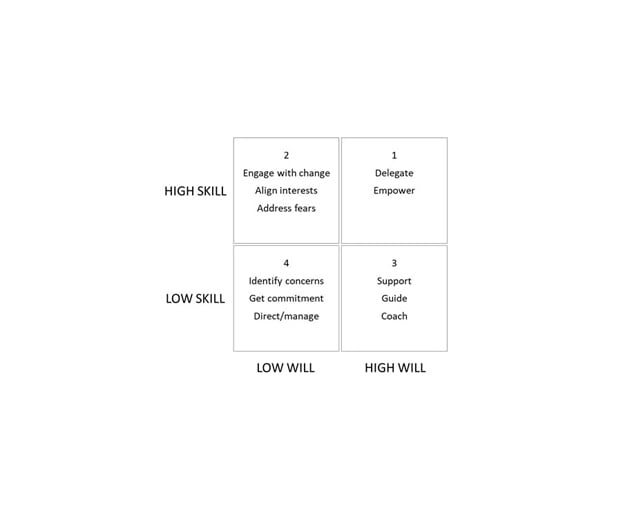Hybrid Working: Practical Tips For Remote Influencing
Three years ago, we met people in person all the time. Now, with increasing numbers of people working from home for at least part of the week, the opportunities to meet clients, prospects and colleagues face-to-face are far fewer than we have been used to.
Fortunately, you don’t need to be in the same room to build relationships and exert influence – here’s a quick round-up of our best practice tips for getting the best out of remote meetings and conversations.
Support non-verbal communication
When we’re in the same room as someone else, we can pick up on all their non-verbal cues: their tone of voice, their emotions and facial expressions, as well as all the additional information their hands and posture can convey. When we interact remotely, we can lose many of these valuable communication signals. This is why it’s so important to keep your camera on during video conferences, and try to make the field of view big enough so that the other person can see your hands.
If the other person is difficult to see or does not have their video turned on, explaining that “I can understand what you are saying much better if I can see you well” can help stress the benefit to the other person of doing this.
Set other participants at their ease
When one or more participants is not used to being seen on screen, a video call can feel uncomfortably formal or stilted. Put people at ease by recognising any awkwardness at the beginning of a call, and set the conversational, everyday tone. And if the unexpected happens (as it often does), it’s important to understand and respect the realities of working from home. Interruptions happen, whether it’s the doorbell going off, a child arriving at the desk or – as happened to one of our team – a dog accidentally unplugging something, and these should be opportunities for positive rapport rather than causes for embarrassment.
There are times when you will need to create a space where difficult or emotional issues can be discussed. Visibly showing the other person that you are ‘moving somewhere quiet’ can help make the other person feel secure. Asking them to ensure that you will not be disturbed during the conversation can also improve success.
Let the other person know that you are closing browsers and other applications so that you can concentrate on the conversation. This removes distractions and signals to the other person that you are really focused on what they are saying.
Use listening and elicitation techniques
Conversation is a turn-based form of communication, and we usually pick up on when it is our turn to speak from the non-verbal cues of the other person. Even when using video conferencing, this can be difficult to do remotely, so use listening and elicitation to help reduce any awkward stop-start conversations.
- When trying to understand an issue, ask the other person to ‘tell, explain or describe’.
For example, “Describe why X isn’t working for you.” This is good practice anyway, as it encourages a narrative response, and works particularly well during remote communication. The narrative response is likely to lead to more information coming from the other person than a series of stop-start questions where it is never quite clear whose turn it is to talk.
- Paraphrasing and summaries are useful communication tools.
Use paraphrasing to consolidate what someone has said to you and play it back to them in your own words; summarise by bringing together and repeating the key points you have heard: “Can I just check that I’ve understood that?” This shows that you have understood what the other person has said, encourages elaboration from the other person, and enables you to probe areas where you might want to learn more.
- Take responsibility for a breakdown in communication.
This encourages the other person to continue talking and rephrase what they said in a different way. “I’m sorry I didn’t quite understand what you meant there” is better than “Can you go over that again?”
- Clarify to illuminate the issues.
When conversations are complex, a collaborative online whiteboard can support good listening. Capturing key points on virtual sticky notes and making connections or building a collaborative mind map can demonstrate that you fundamentally understand the other person. Working together to add the factual basis for the points that have been raised can be a good way of highlighting to the other person where there might be gaps in their view or issues that they need to explore further.
Asking someone to clarify why they think something – especially when there are reduced levels of non-verbal communication – may seem like an attack on their position. Statements such as “You know more about this than I do, it would be useful if you could give me the background on why you know X is true” can remove this potential threat.
Plan and prepare
Conference calls should run to time, just like any other meeting. Admittedly, you won’t have colleagues lining up outside waiting for you to vacate the meeting room, but it’s still good practice to finish promptly, especially as many people will schedule their calls back-to-back over a morning or an afternoon. Make sure you know in advance what you want to achieve through the call and, if appropriate, share any relevant notes and documents in advance so that others can prepare, too. There’s usually an option for this on most online calendars.
Stick with basic best practice
Everything that we have covered here is general good practice for meetings. And remember, even the most seasoned video conference participant can have their off-days (not to mention dodgy connection), so it’s worth doing all we can to facilitate great communication and active listening.
Interested in finding out how Applied Influence Group can help you to increase your ability to influence ? Get in touch on info@appliedinfluencegroup.com.


